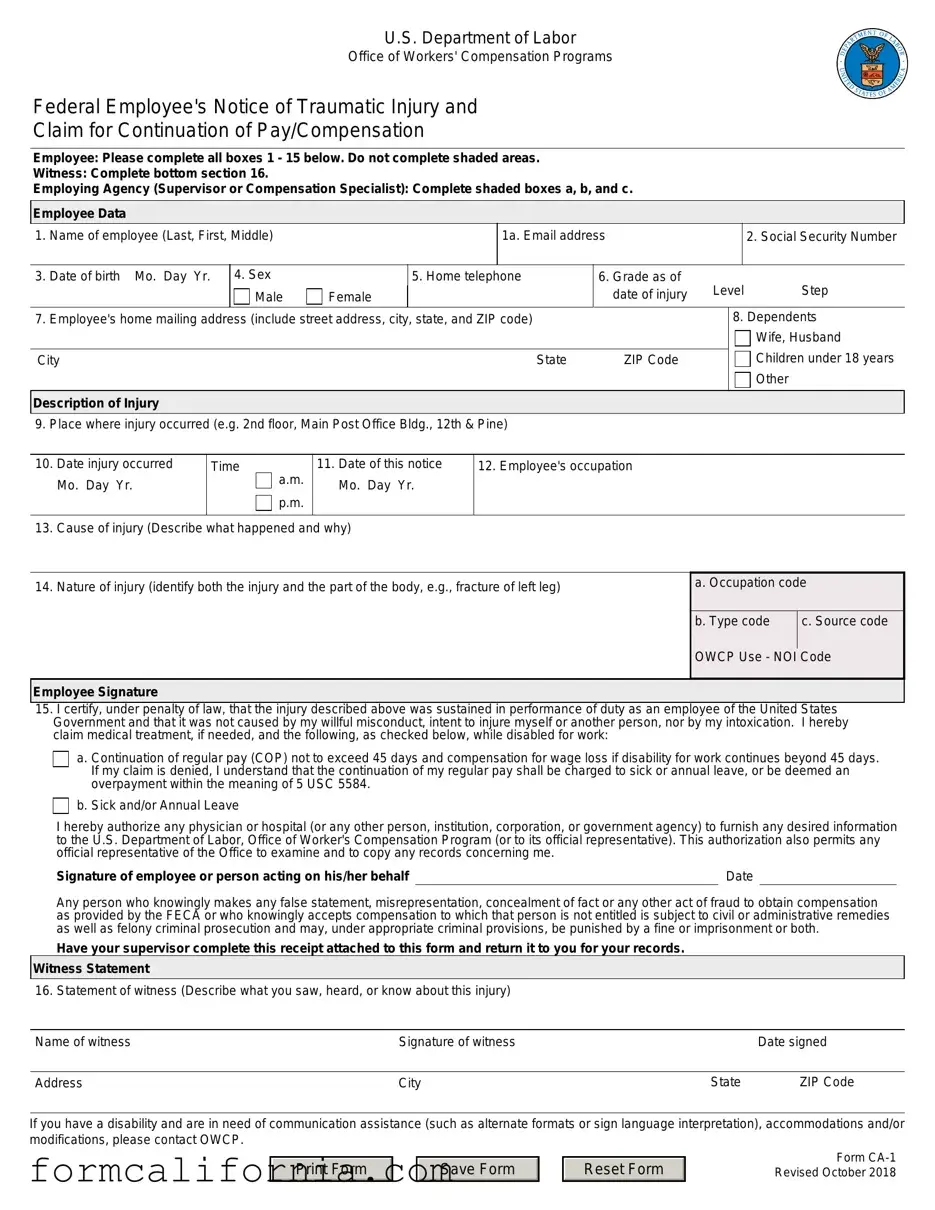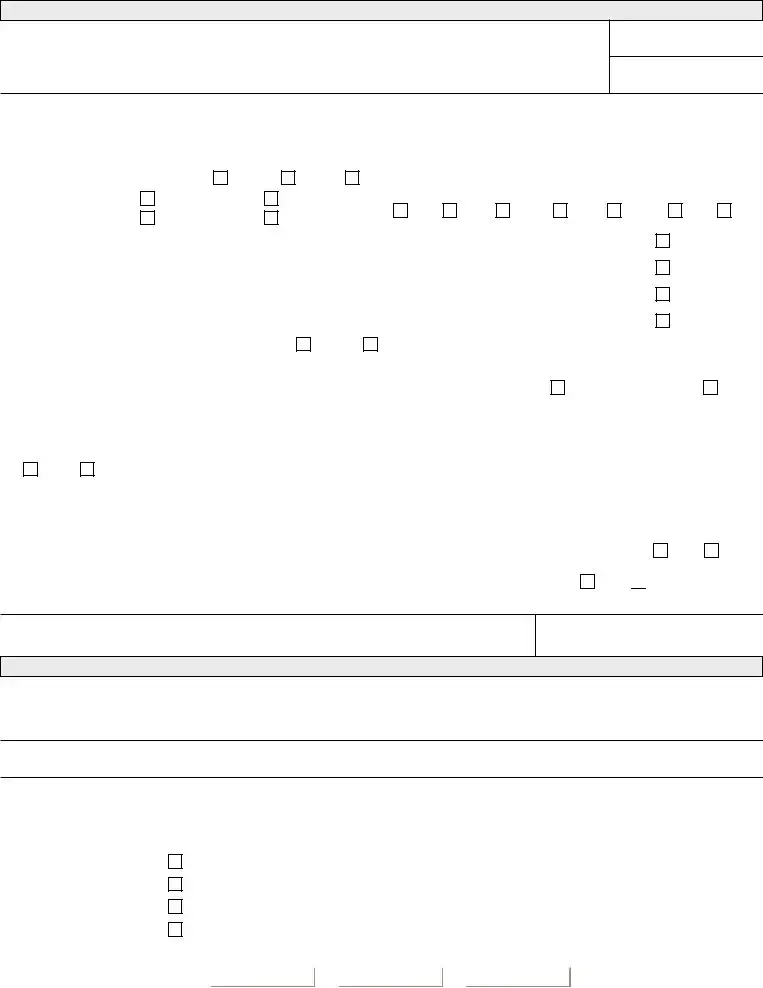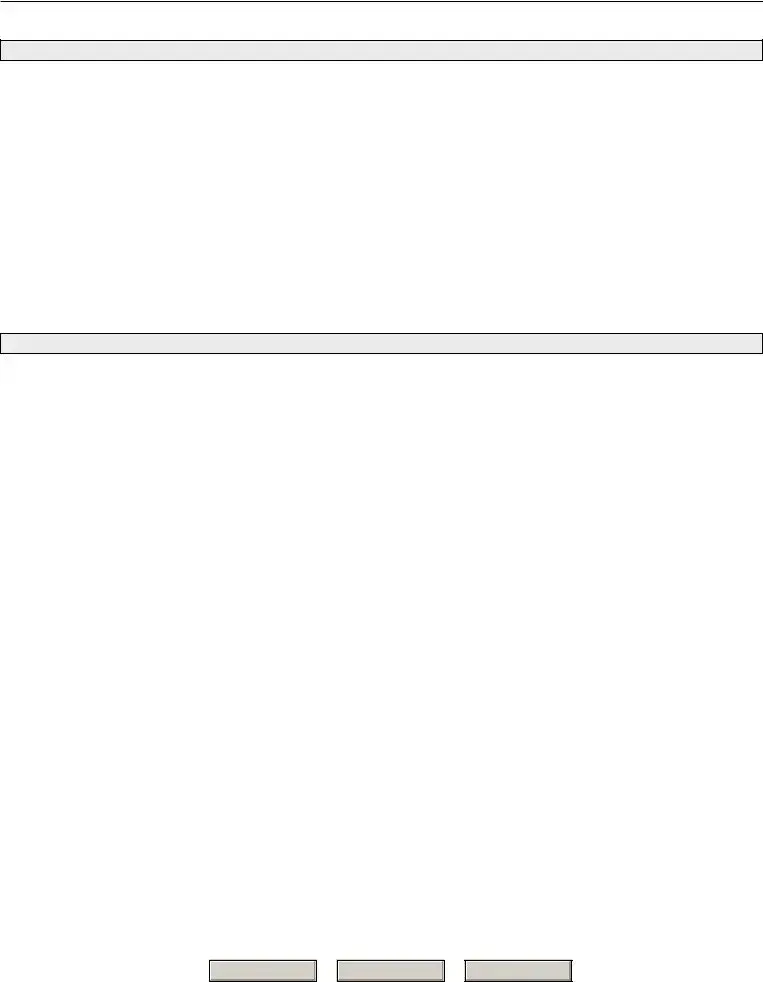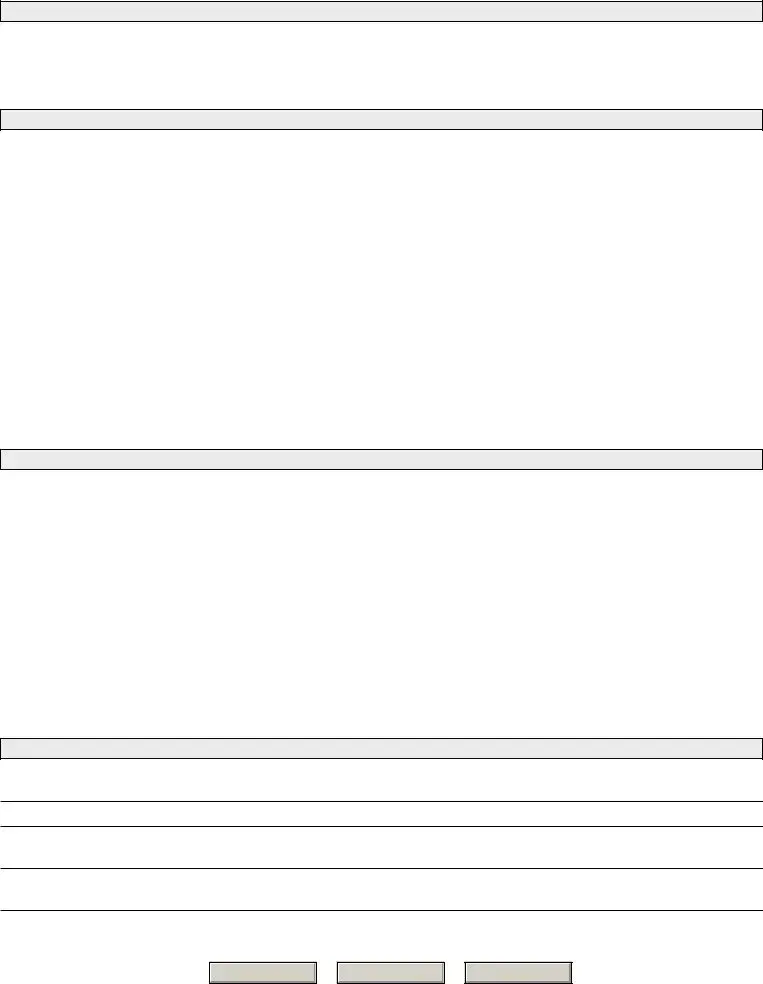The Form CA-2, "Notice of Occupational Disease and Claim for Compensation," is similar to the CA-1 form in that it is also used by federal employees to report work-related injuries or illnesses. However, the CA-2 form specifically addresses occupational diseases that develop over time, rather than traumatic injuries that occur as a single event. Both forms require detailed information about the injury or disease, personal data about the employee, and a certification by the employee that the condition is work-related. Additionally, both involve a section for agency verification and response.
The OWCP-957 "Medical Travel Refund Request" shares similarities with the CA-1 form in terms of being part of the claims process under the Federal Employees' Compensation Act (FECA). While the CA-1 form is used to initiate a claim for a traumatic injury, the OWCP-957 is used to seek reimbursement for out-of-pocket travel expenses related to medical treatment for that injury. Both forms facilitate federal employees' access to benefits and compensation for work-related incidents and require detailed documentation to process the request.
The "Standard Form 3112, Application for Disability Retirement," parallels the CA-1 form since both require the federal employee to provide personal and employment information, along with medical documentation. The SF-3112 is for employees seeking disability retirement under the Federal Employees Retirement System (FERS) or Civil Service Retirement System (CSRS) due to a medical condition that prevents them from performing one or more essential functions of their job. While the CA-1 form deals with immediate injury claims, SF-3112 addresses longer-term incapacities.
The LS-203 "Employee's Claim for Compensation" from the Department of Labor's Office of Workers' Compensation Programs (OWCP) for longshore and harbor workers, has similarities with the CA-1 form, as it is also a claim form for work-related injuries or illnesses. Both documents are critical in starting the compensation process, requiring detailed information about the work-related incident and personal details about the claimant. However, the LS-203 pertains to non-federal employees covered under the Longshore and Harbor Workers' Compensation Act.
The Form SSA-16 "Application for Social Security Disability Insurance (SSDI)" and the CA-1 form are both designed to assist individuals faced with injuries or conditions that impair their ability to work. The SSA-16 helps individuals to apply for SSDI benefits if they have a disability that meets the Social Security Administration's definition. Although CA-1 is targeted at federal employees sustaining work-related injuries, both forms play essential roles in securing financial assistance and support during challenging times.
The "DOL OWCP-5c" form, used for chiropractic services authorization under the Federal Employees' Compensation Act, and the CA-1 form, share the common purpose of facilitating medical care and compensation for federal employees who suffer from work-related injuries. While the OWCP-5c specifically authorizes chiropractic treatment, indicating a focus on a particular method of medical care, the CA-1 form broadly addresses all kinds of traumatic injuries sustained on the job, emphasizing their connection in ensuring workers receive the necessary treatment.
The OPM Form 1203-FX, "Qualification and Availability Form C" used by federal job applicants, shares a procedural similarity with the CA-1 form in its requirement for detailed personal and employment-related information. Although serving fundamentally different purposes—one for employment application and the other for injury compensation—the organizational attention to detail in both documents reflects the thoroughness expected in federal processes.
The "SF-2800, Application for Death Benefits" form, used by the surviving family members of deceased federal employees, shares a connection with the CA-1 form through their functions of providing benefits following a workplace-related event. While the CA-1 form is specifically for injuries, the SF-2800 pertains to death benefits under the Civil Service Retirement System (CSRS), highlighting the range of support extended by federal benefits beyond immediate injuries to include life's most challenging circumstances.
Form CA-7, "Claim for Compensation," relates closely to the CA-1 form as it is used by federal employees or their dependents to claim compensation for wage loss, schedule awards for permanent impairment, or other specified benefits after experiencing a work-related injury or occupational disease. Like the CA-1, it's part of the OWCP's FECA program but is applied at a different stage in the compensation process, specifically after the initial injury has been reported using a CA-1 or when an existing claim requires additional compensation action.
The "VA Form 21-526EZ, Application for Disability Compensation and Related Compensation Benefits," while for veterans, shares similarities with the CA-1 form in that both are designed to initiate a claims process for individuals suffering from conditions related to their service (in federal employment or military service, respectively). The forms collect detailed personal information, injury or disease specifics, and both require supporting documentation to establish a link between the condition claimed and service, underlining the principle of providing support to those injured or made ill by their service.




 No (If "No," explain)
No (If "No," explain)
